In the following text about economics and economy I have introduced concepts from both mainstream economics – highlithed in blue; and from alternative views of economics – highlighted in red.
It all starts with happiness
In fact, the whole issue of the economy is hidden in the three levels of happiness and the discussion of comfort we had in the previous posts. In general, we may seek well-being1 and happiness in material objects and comfort (Levels 1 or 2 of happiness) or in relationships (Level 3). As we have seen in the previous posts the transfer from levels 1 & 2 to 3 is not only a matter of selecting different goals but selecting completely different frames of reference and conceptual foundations. For example, every textbook in economics starts with the discussion of scarcity2.
But scarcity is a concept of level 1; relationships are not measured in any currencies but in time. Relationships require time, but in a different way from the way it is done in neoclassical economics. If I spend time on consumption, for instance on watching television, I lose that time (or really consume) so it cannot be used for attaining the goal of level 3 happiness. When I spend time in valuable relationships with people, I do not lose that time but gain this time for level 3 happiness. It is somewhat similar to information resources when sharing does not deprive me of still having it. In relationships shared time is more; it is a gain because time is not a resource but our goal, the meeting of which leads to happiness as a side effect. What is more, while we may tremendously differ in our material resources we are fundamentally equal as regards the time we are allotted.

Happy people cc by Gareth Williams at Flickr
This paradox of time has been wonderfully expressed in one of the letters of Seneca3:
Nothing, Lucilius, is ours, except time. We were entrusted by nature with the ownership of this single thing, so fleeting and slippery that anyone who will can oust us from possession. What fools these mortals be! They allow the cheapest and most useless things, which can easily be replaced, to be charged in the reckoning, after they have acquired them; but they never regard themselves as in debt when they have received some of that precious commodity, – time! And yet time is the one loan which even a grateful recipient cannot repay.
When we look at the main measures of economic prosperity and economic growth4 either neoclassical such as GDP5 and GNP6, or more progressive ones such as HDI7, we can see that they do not capture the most important aspect – of what we do with time. Time may be closest to what economists call public8 or common good9.
If relationships and concentration on other persons are so important for participative companies, we shall, first of all, be most cautious with time management and trading off10 our time for money. As an old master of Zen, quoted before, focussing his disciple’s attention on voluntary choices, Seneca advises Lucillus: hold every hour in your grasp.
Time and time management most probably belong to the economy of natural11, human12 and social capital13.
Now let us look at levels 1 and 2 of happiness.
Advertising
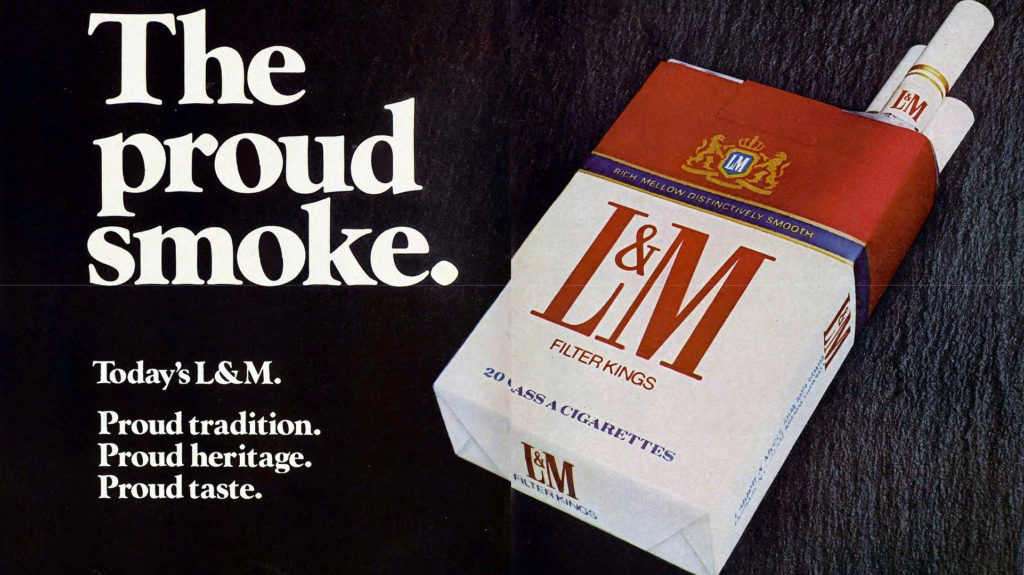
cc by Keijo Knutas at flickr
Although advertising is not an economic term it is mentioned 81 times in Goodwin’s textbook we are quoting here. It is so because it creates demand14 based on happiness levels 1 and 2. We should be aware that it is only vaguely related to needs. Producers are not interested in needs if they have no supply15 for the demanded products and services. They will also not satisfy a need (as for instance anti- AIDS medicine) if people or their governments have no money to pay for it.
McDonald’s spends $1.4 billion a year on radio, television and print advertising. No wonder we are “fairly” well acquainted with this brand, its products, and services through so much exposure. How much McDonald’s is associated with a comfortable lifestyle can be seen when a new McDonald’s restaurant is opened in a new exotic place like Moscow or Beijing. After Fidel Castro’s son’s statement that McDonald’s and Coca-Cola are welcome in Cuba we may expect to see the first McDonald’s restaurant opening in Havana soon and “Coke” will be sold outside the hotels. It is so because Coca-Cola is not only a drink, but also it symbolizes a new (so far forbidden for Cubans) lifestyle16. Once we are vulnerable to the lifestyle message, I can hardly imagine any participative company spending an equivalent amount of money to compete with Coca-Cola. The question is how do Cubans and all the rest of the world know about Coca-Cola? It would be interesting to know that Coca-Cola was first brought to Cuba in 1906. In Europe the best advertisers of Coke were the US soldiers who brought Europe freedom and at the same time Coca-Cola. This freedom-Coke association is very difficult to eradicate in spite of the fact that the 9 and 1/2 spoons of sugar in every can of Coke exceeds by 50% the total recommended intake of sugar for a day. Brands like Coca-Cola or McDonald’s are then in the Hollywood productions, they are in the backgrounds of events. The most deceptive presence is on the university campuses and in high schools; places where “knowledge” and “awareness” should be cultivated. In the morning my children may have a class about healthy nutrition, and during the break, the school will allow them to buy in the school’s shop anything that destroys their health. In Poland, the Ministry of Education recommends not to sell junk food in the school shops, but parents insist on the headmasters to “kill” their children. Of course, they do not use this word. Well as many smokers say: “Freedom is more important than health and life.” Of course the same is true about thousands of other most influential cult companies. Advertisers spent ca $600 billion worldwide in 2015 to convince buyers to purchase their products. This number is comparable to GDP of such countries like Switzerland or Sweden. This immense exposure to advertising results in changing the lifestyles and creating consumerism17. The value of media and entertainment industries in 2014 was $1 740 billion. It means that a huge portion of their income comes from the advertisers. We may think we participate in culture, or we are informed about the events in the world, but in essence, we, first of all, are exposed to lifestyle promoted to sell goods and services. As selling anything for the third level of happiness is very difficult as it is an unrecognised need, they concentrate on levels 1 and 2 where there is demand and it is much easier to assure supply. There is no better way to sell these addictive products than selling the “freedom” of course.
Market is created

Swegway cc by Ben Larcey at flickr
All the markets18 are created on the basis of this media-entertainment-advertising mechanism. It should be noted that concepts such as prices or opportunity cost19 are related only to the purchasable goods. Not to what really brings happiness.
Morgan Spurlock tested what a McDonald’s market is like. He decided to eat only at McDonald’s for a month. Each time he was encouraged by a counter assistant to purchase a SuperSize meal, he would buy it. In the first week he put on 4 kg. After a month he added 11 kg. His cholesterol was 33% higher than when he started. He was also warned by the doctor that his diet was causing serious liver damage. It is worth noting in the context of changing the situation that it took him 14 months to return to his former physical condition20.
In the neoclassical approach we would categorize McDonald’s in the fast food market. And we would expect that it competes with PizzaHut, Burger King, or a local Hotdog stand. Even huge stores started to offer fast food and compete there. The market structure21 seems to be similar to perfect competition22. It would be true were it not for the huge money spent on advertising and promoting McDonald’s as having a specific value and unrepeated experience anywhere else. So McDonald’s is in what is called a monopolistically competitive market. But more and more companies try to enter it. Management strategists encourage creating such monopolies where the product is so specific that only one company offers a given product. Cirque de Soleil or Yellow Label wines are examples of such exceptional “blue ocean strategies23”, which are opposing the “red ocean strategy” of competing with other companies. Of course, this works only for a while. If the market is attractive, other companies sooner or later will enter it. We have to remember that all these concepts hold very well for products, but what is being more and more often the subject of purchase now, is “the experience”.
In fact in 2012 Report on Participative companies McKinsey and Co offer co-operatives to build their strategies on selling exceptional experience. Other market structures of imperfect competition include monopsony24, monopolistic competition25 and oligopoly26.
What we should immediately notice in Morgan Spurlock’s story were externalities27. Being overweight or having problems with liver seem to belong to negative externalities. But if we look at it from a broader economic perspective it is not necessarily so. If he continued with his lifestyle, as most Americans do, he would support other industries. First of all his problems with liver would require appropriate medication, and his obesity would encourage him to practice sports and read guides and watch programs on how to lose weight. Hopefully for the pharmaceutical industry the medications for liver would cause some unknown to medicine side-effects that would require other drugs. If they are lucky he may even end up in a hospital, where he will be provided for by health care and the pharmaceutical industry. After paying there a huge bill he may decide to buy insurance for the future. Next steps in obesity may result in the need to buy a larger car that will consume more gas; he may have no choice but to travel business class, etc. When we add all of these expenses and offers from all involved industries we will find out not only aggregate supply28 and aggregate demand29 going up, but also increase in GDP and HDI. I want to remind you, that we are all the time on levels 1 and 2 of self-oriented happiness.
Supply side of the market

Worker cc by NAVFAC at flickr
There is a missing point in the reasoning so far. We assumed unlimited demand as if someone who becomes a victim of consumerist lifestyle propaganda had unlimited resources to buy everything that is associated with the promoted lifestyle. This is not true, the money has to be earned or found somehow. We can do it in a more difficult way, on our own individually or in a participative company, or else we can find a job. As the demands of the markets are higher and higher, in order to earn more the companies have to increase labour productivity30. This can be done through automation or redesign of the products in such a way that they are cheaper and easier to produce. The shapes, packages, etc. are changed in such a way that they can be produced automatically. Robots are expensive, so automation also requires more money at the very beginning. The providers of products and services have to look for investors and rely heavily on financial markets31. Such investments can be profitable only if there are mass consumers. This is why there is the necessity to advertise products on such a large scale. The second consequence of lifestyle propaganda is the development of the sectors directly related with the promoted lifestyles. No wonder fast moving consumer goods, especially food, media and entertainment, telecommunication, electronics, luxury tourism, real estate goods are most attractive. So work in such industries is much better paid than in education, culture, health and social care and even research. The higher a person is in the organizational hierarchy of such companies, the greater the chances of earning more32.
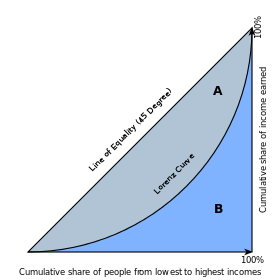
Figure 1. Lorenz Curve.
According to Forbes’s recent information the best paid CEO who earns $131 mln a year comes from McKesson, a pharmaceutical company. The next companies, which pay their CEO ca 60 mln per year, are: Ralph Lauren, Vornado Realty, Kinder Morgan (Energy Infrastructure) and Honeywell. People who do not want to do the worst paid jobs, or who do not even have such a possibility, end up as unemployed33. Those who do have a job, also have a chance to get a job for a minimum wage. The same Morgan Spurlock tried to live for 30 days on minimum wage and, as could be expected, it was not possible. Sometimes I can hear that this is an effect of Pareto principle34 as if it were a law of nature. 80% of income always goes to 20% of the people. But within the 20% of the richest the same rule applies again, so 80% of the income of the richest goes to 20% of the richest of the richest, which means that 4% of people own 64% of income and 0,8% 60,8%. However, the Pareto distribution similarly to normal distribution may take different shapes depending on a year or a country. In other words, we are not determined to have an 80-20 division. Even more, it depends on us if the highest income goes, for instance, to organic fair trade producers or to highly intensive agriculture producers. It depends on our choices who is unemployed, a music teacher or a football player. But even if we accept the naturality of the unequal distribution, it is interesting to ask what qualities, skills, responsibilities are paid such horrendous salaries, higher than that of the president of the United States, which seems quite a responsible job, and most interesting who agrees to pay those salaries.
Money and its owners

cc by Toledo Museum of Art at flickr
In the previous chapter we mentioned how the emergence of surplus made some people independent of others. For many ages this surplus was invested in land and the richest were the land-owners. With the arrival of technological progress when money35 could be earned more easily and more quickly outside agriculture, money substituted the land. Now, the owners have money and want to multiply them. This requires a lot of new economic institutions36. The role of banks increases, while at the same time there appears the symbol of capitalist economy – the stock exchange. The markets created by lifestyle advertising become institutionalized, but many of the institutions have mythological character. It means people think they are something else than they really are. We already know that the larger the scale the higher possible productivity, more demand for capital, but also higher profits. The Stock exchange and other financial institutions provide capital for the development of the consumer based market based on levels 1 and 2 of happiness. Just a reminder, these are levels that do not give real happiness.
The problem with the stock-owners is that they are anonymous. Being anonymous and dispersed means they cannot take responsibility for their own actions and the actions of companies they own. We are coming back to the discussion of determinism, which we saw in the post about control. A person can overcome determinism by making informed choices. Only in this situation we can take responsibility for our choices. The Stock exchange is 100% deterministic, as the only incentive people have is profit. They will invest in any company that secures them the highest profit. Ethical investors try to have both, but they are still investors who expect return on their investments. Investors usually are people who follow level 1 happiness – except that their needs are not food, sex, or shelter but greed for more profit. We already know which companies secure the highest profits – those that rely on consumerist lifestyles. This means that, on the one hand, the companies and their actions are acceptable as long as they bring that profit, while on the other hand, they will be ready to pay the managers any money to make sure they get the profit. So a prime minister or a president who is responsible for fiscal policy is in fact responsible for taking the money from the people, why CEOs are responsible for bringing the money to the people. No wonder the politicians earn less than the CEOs of top companies.
Government interventions

cc by Rajarshi MITRA at flickr
The influx of consumerist culture, and the pathological influence of entertainment media and advertising, seems to go unnoticed by any authorities. Only today, did I receive information from my son’s school about a movie night with drinks and popcorn served to accompany the Pixar’s 2015 movie – “Inside Out” which is nothing more than an animated version of determinism, where emotions and brain functions, personified as characters of the film control the life of the main character – 11-year-old Riley, who moved to a new city because her father decided to start a new business in San Francisco and move the whole family from Minnesota. As we can imagine there is no character named “Free will”, no stable island of Character, all the “personality islands” including Family and Innocence can completely perish under the pressure of circumstances and emotions and the Pixar’s version of a happy ending is the triumph of Joy probably until the next traumatic event. This vision of a vulnerable and controllable human being may do real harm, as children easily identify with attractive characters. Filmed in a creative and technically perfect way, the movie is thoughtlessly promoted by a school, which is supervised by Halifax Regional School Board, which claims to “provide a high quality education for every student every day.” Moreover, the Board is financed by the Halifax Municipality and the Province of Nova Scotia. This example shows that the dangerous cultural influences have been institutionalized and taken for granted. When we look at course curricula at almost any school or university, we can see that education on all levels promotes determinism under the disguise of “science.”
When we think about the role of government37 in economy, we usually think about different economic systems38. In socialist planned economy systems the government was responsible for everything. In market systems39 the government’s role is reduced to such activities as monetary40 or fiscal policy, and control of inflation41. We do not remember that the foreign policies of any government are directly related to economy. Globalization did not start in the 20th century as an economic phenomenon. It had started with the cruel exploitation of colonies after Columbus’s discovery of America. And it is not a matter of the past. A few weeks ago Nestle admitted buying coffee from Brazilian farms that might use slavery.
International context
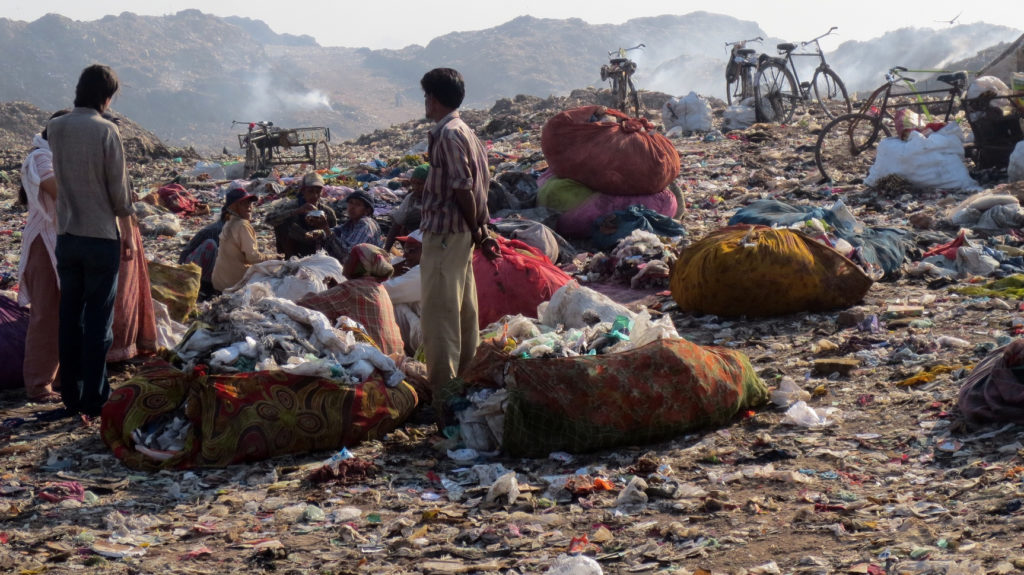
cc by UUCSJ at flickr
In the introduction, I mentioned the relationship between IG Farben profits and the start of the Second World War, but of course such relationships exist in all conflicts all around the world. Viktor Bout42, a Russian entrepreneur who was charged with arms trafficking in the US in 2010, was known for delivering arms to many parts of the world, often to both sides of a conflict. It is hard to believe that the arms market has nothing to do with government interventions. Companies producing arms are also listed on the stock exchange and they also want to deliver profit to their share-holders. Governments are famous for their trade protectionism that is creating barriers to trade43 till the moment they can overflow the market with their competitive products. When they have comparative advantage, they become promoters of free trade and free currency exchange44 as in free trade they can impose their economic advantage and exploit poorer countries as they have already reached comparative advantage45. Sometimes the international agencies recommend countries to specialize in a given produce as part of their structural adjustment policies46. This happened to cotton growth in Burkina Faso or sugar cane in Cuba. The countries are locked-in a given sector and become then vulnerable to any pressures, as they are dependent on imports of everything else. It is no wonder that the exploited poor countries have negative balance of payments47 and practically sponsor the rich countries48.
Anything – war, exploitation, protectionism and liberalization – is justified in the service of higher profits of shareholders, which is a new highest sacredness. Many participative companies see their chance in organic and fair-trade products, which used to be produced locally and sold in consumer companies. But both ideas have already been compromised for the sake of large corporations who are more then willing to use the “healthy food” fad to promote their products. Now, many organic farmers have abandoned their “organic” certification because it has become so bureaucratic that only large-scale farms can afford time and effort to keep the certification. The governments and individual politicians are entangled with the huge corporations. Many businesses secretly support both sides of the political fight so as to be able to have influence on jurisdiction after the election whichever party wins the election. Inequalities in market economies turn out to be protected as they secure profits to the shares’ owners, and private ownership is considered to be holy regardless of the consequences of the irresponsible, anonymous ownership to the world. The numbers in the post about invisible wars, should be supplemented with the number of deaths caused by poverty and malnutrition. More than 10% of the 7.3 billion in the world live in chronic undernourishment. The amount of deaths that are caused in this way are nothing but victims of the other, rich part of the world who use corruption and information advantage to sell asbestos, pesticides, and tobacco in the Global South when they are restricted or forbidden in their own countries. And the administrators of the underdeveloped countries are much easier to corrupt than in the developed countries.
Solutions

cc by JBColorado at flickr
We should have a look at what happens when a family sits together, prepares the dinner together, and even grows the produce for their dinner on their own. The research says the children will not be obese, the parents will have lower chances of divorcing, and the members of the family will strengthen their relationships while preparing the meals. The meal will be healthier, there will fewer chances of them being patients in the health care industries, they will also have more nutrients in their bodies so they will not buy para-pharmaceuticals. The time spent with the family will be lost for the conventional economy. Such behaviours, if common, might undermine many sectors of the food industry, pharmaceutical industry, and health care industry. These may lead to many market failures49. The GDP would drop and we may expect some growth in the happiness index, depending on how it is measured. There are some attempts to measure this new result, for instance the Co-operative Communities Index used to compare Ontario municipalities in reference to participative company values and principles. (https://ws.onehub.com/files/sibymof1).
Another interesting measure from the Canadian perspective is the Canadian Community Vitality Index. Figure 2 below shows the composition of the Index.
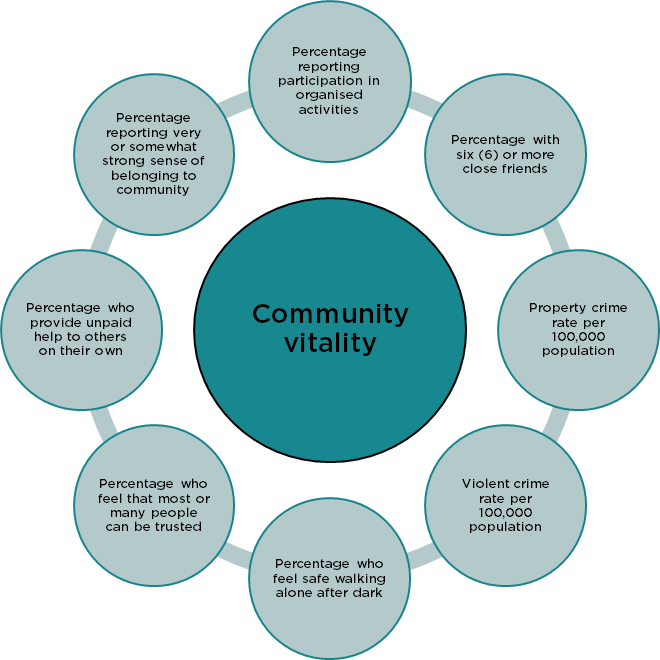
Figure 2. The Canadian Community Vitality Index.
The problem is this index will not capture the phenomenon and importance of the family cooked meal. This is captured by Global Home Index (http://www.globalhomeindex.org/eng/index.html). If we want to measure reaching real level 3 happiness, we have to find a better index. Some form of composite index is offered as Family Prosperity Index: http://www.familyprosperity.org/ similar indexes would be necessary to include family strength and life and work community strengths at the same time as well as state support for development of communities. It should be based not on personal opinions (introspection) but exposure time and time distribution – real action. The work time should also be divided into time spent with other people in mind, or non-personal goals like profits or market share. Some of the essence of this approach is captured by the concept of time dollars50 and time banks. They are used in a very limited way now, but I can imagine its increasing role in the future. The problem is that such exchange works perfectly for comparable services. Plumbing and child-care could be easily exchanged. But what would happen if an attorney were to offer 6 hours of her time for baby-sitting of her children by a teenager one evening from 6 pm to 12 am? We may expect the demand and supply differences and necessity of some pricing of services, and we may quite easily end up where we were at the very beginning. Yet, there are hundreds of time banks all over the world and the movement is growing. Perhaps, similarly, as international travel was revolutionized by CouchSurfing, where more than 14 million people exchange their places to sleep for free, time banks may revolutionise service sectors of the economy.
Some interesting solutions appear when the societies are able to share in solidarity their income. Many of the new indexes have higher values in countries with lower differences between 20% of the richest and 20% of the poorest51.
Perhaps economists should learn how to conceptualize different rules for different sectors and introduce the concept on non-monetized economies of the household, community, and nature to account for different aspects of our everyday life. Economic indexes should certainly cover those aspects of economy otherwise, the decisions made on the basis of the existing indexes are irrelevant for the life of people.
Economic development requires understanding of complexities and mutual dependencies between economic phenomena. In this text, I was trying to show how much the future of us as a human race, and particularly our participative companies, depends on how we define success. If we decide to concentrate on profit we have to be ready to die prematurely and accept that others may starve to death, because even if new discoveries are in place, like the discovery of America by Columbus, they turn into tools of greed and destruction. The advantages are immediately counterbalanced by negative consequences. The medicine allows us to live longer but the same medicine forces us to suffer longer. I tried to show that in economy everything is related with everything else. As to how to improve your expertise, perhaps economists are not necessarily the authors we should select first. Investigatory journalists are often more courageous to speak of phenomena where academics may be effortless. I list the first reading list of books according to my preferences, remembering our focus on participative companies.
| PREVIOUS | NEXT | ||
| Economy and economics |
Futher reading
Tom Webb “From Corporate Globalization to Global Co-operation”
Ha-Joon Chang “Economics: The user’s Guide”
Naomi Klein “The Shock Doctrine”
Naomi Klein “This Changes Everything: Capitalism vs. The Climate”
Raj Patel “The Value of Nothing”
References
Numbers in parentheses refer to the chapter number in Goodwin et al. (2015), in which the phenomenon is discussed in more detail.

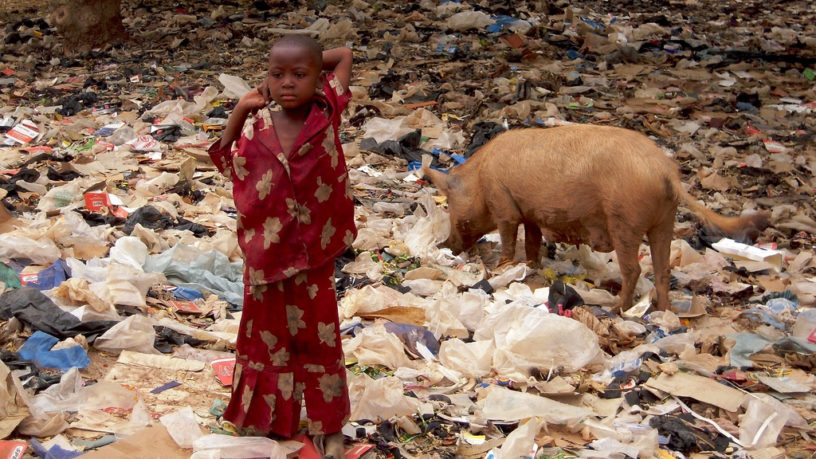





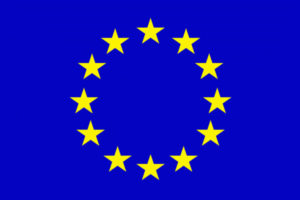 The participation in this project is free because it is financed by a grant of the European Union -
The participation in this project is free because it is financed by a grant of the European Union - 